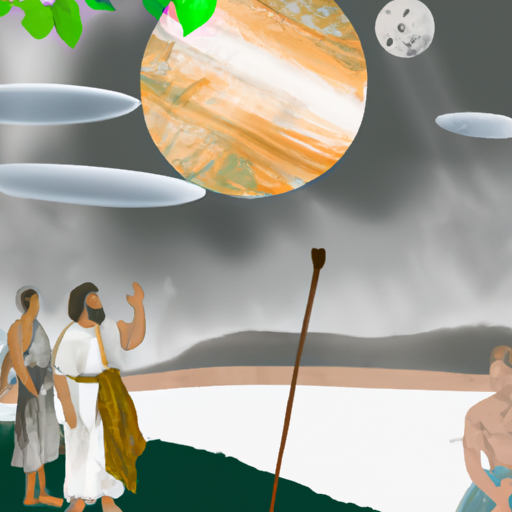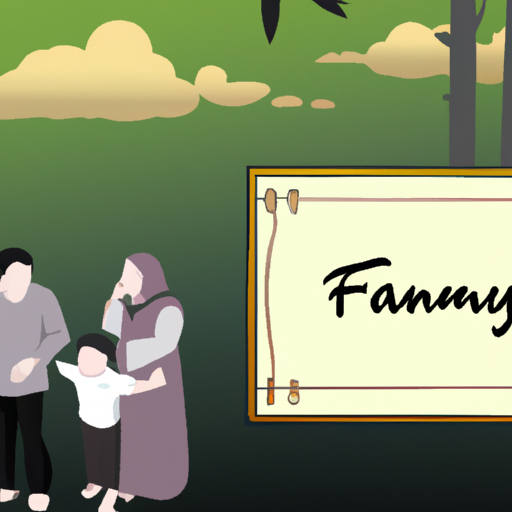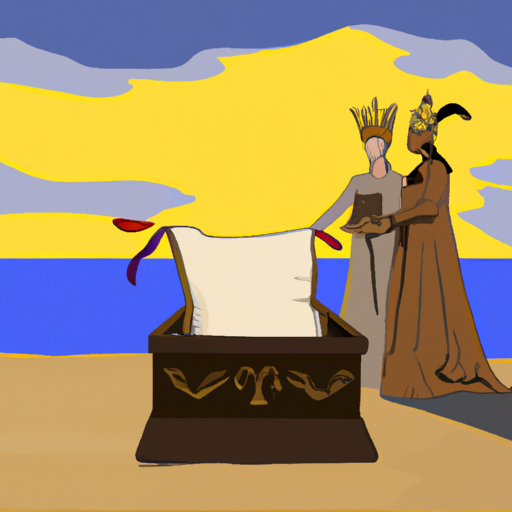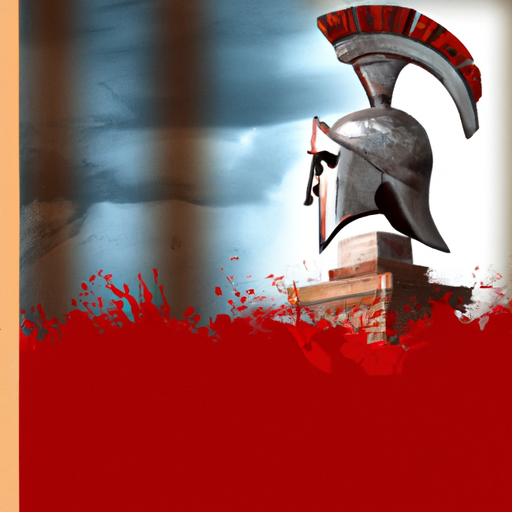Exploring the History of Viking Fears: What Were Vikings Afraid Of?
Unearth the secrets of the ancient Vikings and discover what truly made them tremble! From their seafaring conquests to their burial rituals, uncover the truth that lies beneath the mysteries of this legendary people. Dig deep into the depths of their culture and learn why they were so feared throughout history. Unveil the truth behind their boldness and courage, and explore what really lurked in their shadows. Delve into a world filled with tales of bravery, adventure, and terror – a world where nothing was ever as it seemed.

The Vikings have left behind an enduring legacy of awe and reverence, but what was it that truly made them so feared? To uncover the truth, one must look beyond their boldness and courage and into the depths of their culture. Here lies tales of bravery, adventure, and terror – stories passed down through generations, inspiring future explorers to delve further into this legendary people.
From Viking longships to burial grounds, evidence is scattered throughout the land that reveals how they managed to survive in harsh climates, their success in battle, and the rituals they upheld during times of death or victory. Unearth secrets about their gods, beliefs, and customs – all adding to the mystery surrounding these seafaring warriors.
Journey through a captivating history filled with intrigue as you explore what lurks in the shadows of this ancient people’s culture. Discover why they were so successful in battle and what inspired such fear and respect throughout history. The history of the Vikings is an incredible journey still being unraveled today – a journey that will continue to uncover more secrets about this legendary people.
.
Introduction

Fearsome and fearsomely brave, the Vikings of yore were a seafaring people who traversed the seas from the late 8th to early 11th century. Though their courage was unparalleled, even they could not deny the dread that supernatural forces like trolls, elves, and witches invoked; nor could they ignore the terror of wild animals such as wolves and bears. Furthermore, their fear extended to other humans – be it rival tribes or foreign countries – and death itself was an ever-present specter that hung over them. For if they fell in battle without honor, they were doomed to a fate worse than death: an eternity in the underworld.
– Historical Accounts of Viking Fears
A dread pervaded the land during the Viking Age, as Norse warriors roved across Europe in pursuit of wealth and might. Tales from centuries past give us a glimpse into the mental state of these marauders, who were haunted by death and superstition. They venerated their gods, believing them to be both benevolent and malevolent forces. Additionally, they harbored deep suspicion for those who did not share their culture or customs, often viewing them with trepidation. The story of the Vikings’ fears provides an intriguing look into the psyche of these ancient people and how they viewed their surroundings.
– Viking Beliefs and Superstitions in the Ancient World
A mysterious people of old, the Vikings left a legacy that has endured through the ages. Tales of their seafaring warriors and traders raiding and colonizing parts of Europe from the late 8th to early 11th centuries have been passed down for generations. Along with their raids and conquests, they brought with them a unique set of beliefs and superstitions that still linger today.
The Viking belief system was rooted in Norse mythology, which proposed nine realms in the universe, each ruled by a god or goddess. Fate, or wyrd, was thought to control how one’s life would unfold and many gods and goddesses were believed to influence events on earth, such as Thor and Odin. Elves, dwarves, giants, trolls and other supernatural creatures were also part of this complex belief system.
Vikings had numerous superstitions about everyday life. Sneezing three times in a row supposedly meant someone was talking about you behind your back; wearing clothing inside out was said to bring good luck; sacrificing an animal or throwing Thor’s hammer into the air three times could bring bountiful crops.
Death was especially feared by Vikings; it was believed that when someone died their spirit had to find its way across a bridge guarded by two giant wolves before entering Valhalla – the great hall where brave warriors went after death – while touching a dead person’s body resulted in being cursed!
The far-reaching effects of Viking beliefs can still be felt today – from stories of dragons and trolls to tales of Norse gods and goddesses – our understanding of the world around us is shaped by these ancient superstitions even if we don’t recognize it!
– The Role of Religion in Shaping Viking Fears
Trepidation and dread were pervasive throughout Viking culture, due in large part to their religious beliefs. The Norse religion of Odinism instilled a sense of fear among the people, as they believed that the gods had control over their lives and fate. Furthermore, death was seen as an inescapable end, with warriors being taken to Valhalla by the Valkyries after they perished. This fatalistic outlook only served to intensify their fear of the unknown; trolls and dragons were thought to roam forests and mountains, attacking unsuspecting travelers or raiding villages at night. Stories told by skalds around campfires further reinforced this terror, making it difficult for anyone to venture out without feeling apprehensive about what might lie ahead. Additionally, belief in witchcraft and sorcery created a heightened sense of caution; many feared that witches could cast spells on them or bring about bad luck through rituals performed with runes or other objects associated with magic. All these factors combined to create an atmosphere of fear that permeated Viking culture for centuries.
– Examining Viking Fear Through Archaeological Evidence
The mysteriousness of the Vikings has been shrouded in fear and violence for centuries, but what can archaeological evidence tell us? Uncovering the history of Viking culture can provide a window into how they were perceived by other cultures. Examining artifacts such as weapons, tools, and jewellery gives us an insight into the role fear played in Viking society. In addition, examining burial sites and graves offers clues to their beliefs and practices related to death. Finally, exploring the ruins of their settlements gives an idea of their daily lives and how they interacted with one another. All these sources together allow us to gain a greater appreciation for the complexity of Viking culture and its ties to fear.
– Exploring the Impact of Enemy Cultures on Viking Fear History
The Vikings’ legacy is marked by a deep-seated dread of unfamiliar cultures. As they traversed the seas, the seafaring people encountered many different societies, and their fear of these foreign peoples was a major factor in their history. In this article, we will delve into how this fear of the unknown shaped Viking culture and gave rise to certain strategies for dealing with them. We will consider how the Vikings reacted to these strange cultures, what tactics they employed when confronted with them, and how this fear left its mark on their culture over time. By exploring enemy cultures’ influence on Viking fear history, we can gain an understanding of how this powerful emotion molded their society and left an indelible mark on their legacy.
conclusion

Awe-inspiring dread shrouded the ancient Viking warriors, as they confronted the reality of death in battle and its accompanying dishonor. Legends tell of their terror at the thought of incurring the wrath of powerful gods and goddesses from Norse mythology, who could bring about misfortunes. Superstitions ran deep amongst these seafaring people, who often resorted to precautions to ward off ill-fated portents.
.
Some questions with answers
Q1. What were Vikings afraid of?
A1. Vikings were primarily afraid of being killed in battle, as well as the unknown and the possibility of failure.
Q2. How did Vikings view death?
A2. Vikings viewed death as an integral part of life and believed that their fate was predetermined by the gods.
Q3. What did they believe would happen after death?
A3. After death, Vikings believed they would go to Valhalla, a paradise where they could feast with their fellow warriors for eternity.
Q4. Did Vikings fear supernatural creatures?
A4. Yes, Vikings were known to be fearful of supernatural creatures such as trolls and dragons.
Q5. How has the history of Viking fear been recorded?
A5. The history of Viking fear has been recorded through stories, sagas, artworks, and archaeological evidence from the Viking Age (793-1066 AD).





